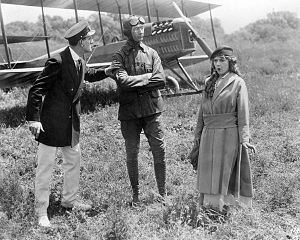Top speed 152 km/h Length 8.01 m | Wingspan 12 m First flight 1913 | |
 | ||
The Martin T and TT was a training biplane produced in the United States in 1913 for military use. It was a conventional, three-bay biplane with unstaggered wings of equal span. The pilot and instructor sat in tandem, open cockpits with dual controls. Fixed, tricycle undercarriage was fitted which could be exchanged for a single pontoon under the fuselage and wingtip floats.
Contents
Early examples were delivered to the Army without engines, so that the Army could power them with engines salvaged from other aircraft, but later TTs came equipped with Curtiss, Hall-Scott, or Sturtevant engines.
In 1915, a Model TT was piloted by Oscar Brindley to win the Curtiss Marine Trophy for the longest flight within ten consecutive hours in the one day, covering 444 mi (710 km).
The Model T was the basis for the Martin S Hydro seaplane, with a lengthened fuselage, a greater span, and upper wing ailerons.
The first Martin T acquired, Signal Corps Number 31, was deployed to Texas in April 1915 as the Army massed around Brownsville in response to civil war in Mexico involving forces under Pancho Villa. On April 20, S.C. 31 became the first American military aircraft to be fired on by a hostile force. Although not hit by a machine gun firing at it from the Mexican side of the border, the returning pilot taxied it into a ditch and damaged it beyond repair.
Variants
Operators
Specifications (TT)
Data from Holcomb
General characteristics
Performance
